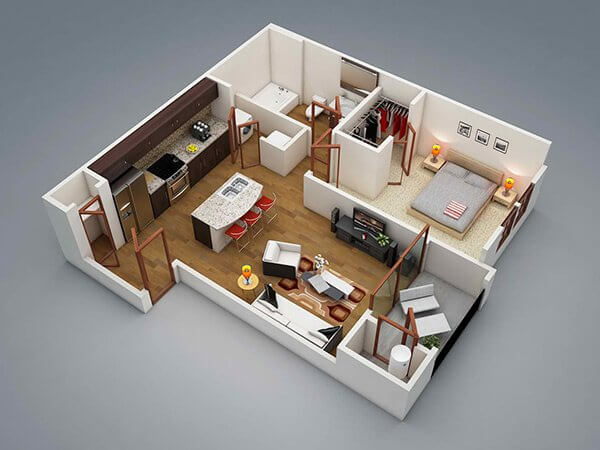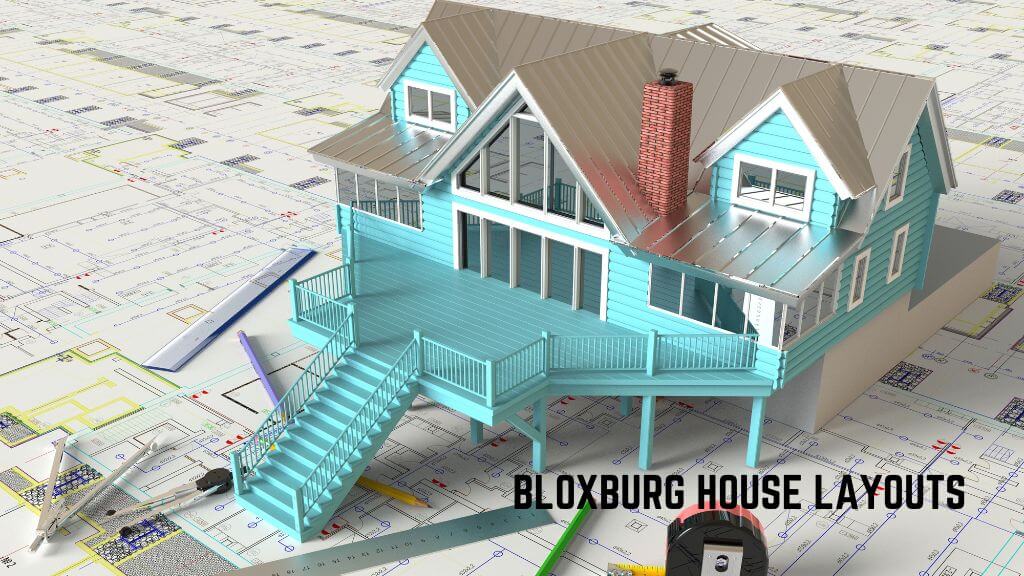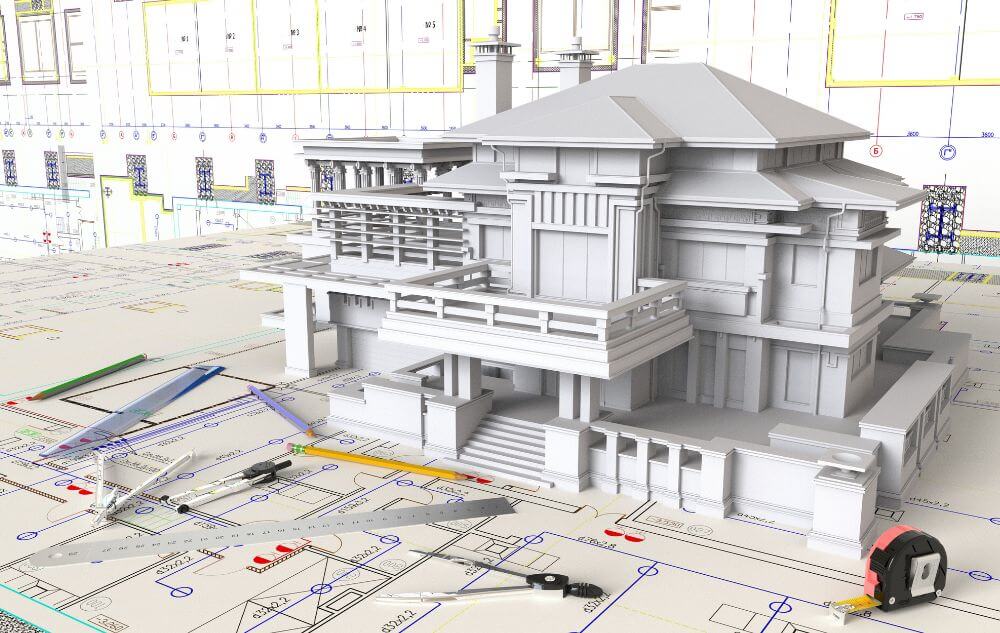Whether you are designing a new home, or renovating an existing home, the building elevation is an important consideration in the design process. The building elevation determines how the building will appear to the exterior, and it also reflects the views the building will have from the ground plane. The elevation of the building also reflects how the roof will be constructed.
Plan view
Whether you are looking to build a new home, or renovate an existing one, an elevation drawing is required. The good news is that the best way to go about this process is to ask the architect, builder or construction manager for the relevant information. Often, this information can be found on the house construction drawings page.
The most effective way to draft an elevation is to measure the height of the main floor plan to the final landscaping level. It’s also a good idea to use an architect’s scale for this particular task. The scale is particularly helpful in drafting the details on a complex curved structure. A good example is a shed roof with eaves. You may need to do some maths to figure out how much the eaves are overhanging the exterior wall.
Generally, a good rule of thumb is to use the same scale for drafting the details on the main floor plan as you would for the elevations. It’s also a good idea, when possible, to ask the architect, builder or construction consultant for the relevant information. This way, you’ll be able to avoid the headache of guessing at the end of the day.
In fact, it is possible to draw a house that has both an elevation and a floor plan on the same piece of paper. This allows you to easily compare one to the other, and ensure that you’ve got the best layout for your needs. A typical set of as-built drawings includes a floor plan, elevation and section drawing, with the elevations often drawn at a smaller scale than the rest. It’s also a good idea, especially in the early stages of construction, to check with the builder to ensure that the plan is up to scratch. A good tip is to keep a copy of the main floor plan on the work table at all times. If possible, use a piece of drafting tape to keep the plan in place. The plan is the logical sandbox for any building project, and it’s best to have a designated area for drafting, so that the builder isn’t wasting time and materials on an incomplete drawing.
Floor plan
Often, a floor plan and elevation are the first two drawings of a building. They serve as a road map of the structural elements of a building. They also show the relationship between the rooms in the building.
Floor plans show how doors, windows, and structural elements are arranged. They may also include symbols for electrical equipment such as lights, outlets, switches, and thermostats. They may also include symbols for plumbing fixtures, such as bathtubs and showers. Plumbing fixtures may also include toilets, sinks, and bidets.
Floor plans are usually drawn at a scale of 1/4″. This scale is used to ensure consistency among the different elements of the plan. It also provides a good idea of how the plan will fit on paper.
Elevations are drawn at a scale of 1′ : 1/4″. They show a side and front view of the building. They also show the height and width dimensions of the structure. The exterior finishing materials, such as siding, trim, and exterior walls, are also shown.
Elevations may show a variety of roof styles, including gable and shed roofs. These roofs may have overhangs. Depending on the type of roof, calculations will need to be made for the overhang.
The roof may be omitted from the floor plan, but it is usually represented in the elevation. Elevations show the side view, back view, and front view of a building. The exterior walls are represented by black outline or double lines. They may also have patterns inside to indicate the materials used.
Interior walls are usually shown by thicker lines. Doors are often represented as gaps in the wall. They may also have a curved line that indicates the swing direction.
Interior electrical wiring may be represented by symbols, such as lights, switches, wall jacks, floor outlets, and thermostats. Plumbing fixtures are also represented by symbols, and they may be accompanied by simple outlines. Some plumbing fixtures may require separate sheets in the blueprint.
HVAC systems are also represented by symbols. They may include furnaces, air conditioning units, and wall vents. They may also include straight ducts. They may be located on separate sheets or incorporated in the overall floor plan.
Ground plane
Depending on the site conditions, there is no standardized rule of thumb as to which method to employ. In some cases, a more detailed calculation is advisable. This can be especially true when dealing with sloped terrain, retaining walls or landscaping. In some instances, it is simply a matter of taking a few points of interest and combining them into a composite grade elevation map. The result is one of the simplest and most user-friendly forms of 3D rendering to date.
For starters, the most important thing to know about the grade is that it is not a zero-based, meaning the elevations are actually relative to each other, not to mention the elevations above and below the structure. This makes it a good place to start your 3D modeling journey. In general, the best place to start is at the top of the elevation list, where you will find a good starting point for the rest of your journey. As you move lower down the elevation list, you may be surprised to find out that there is a world of difference between a sloping and flat site. This makes it all the more important to keep your cool.
The grade has a number of tributaries, all of which should be considered. Its best to consult with a certified professional in the field to make sure your plans are as accurate as possible. The best way to do this is to use a site plan, elevation map and 3D modeling software to produce a single unified 3D model. A good drafting firm should be able to assist in your search for the best solution. The aforementioned three Cs will prove to be invaluable if your plans include a basement. As with all other aspects of the construction process, you may find that you have to make some adjustments and tweaks along the way. This can be a fun and exciting experience for both you and your construction crew.
Example of an elevation plan
Creating an elevation plan for your home is an important task, and it is essential to make sure that you have the right dimensions for your home. Besides providing you with a clearer picture of the room, an elevation plan can also help you to find out where to put furniture, fixtures, and other items in your home.
You should know that elevation plans come in various types. A basic elevation plan shows the dimensions of a vertical height. It includes the main doors, windows, and the scale of the building. It also shows the materials used in construction. It is important to make sure that you get an elevation plan that is accurate, especially if you are building a new home.
An elevation plan can help you get the approval you need for your home, speeding up the process. There are many advantages of creating an elevation plan, including the ability to show important projects like eaves, soffits, and roof pitches. You can also use your elevation plan to show your ceiling height. You can also use the information in your elevation to determine whether or not your house will meet building regulations.
An elevation plan can also help you determine the cost of building your home. A good contractor will provide you with an elevation plan for your home. You can also use it as part of your application for planning permission. It can also help you to determine how many windows and doors you need, and whether or not you have enough roof space for a chimney.
An elevation plan should include all of the elements of the building. If you are creating an elevation plan for an interior room, you will need to include furniture, counters, fixtures, and other elements. You will also need to include details of your trim and electrical equipment.
An elevation plan should also include a scale. This helps the architect and construction workers determine the size of your home. You should also include information about the siding material. There are many different siding materials, and your elevation plan should include the siding thickness.




